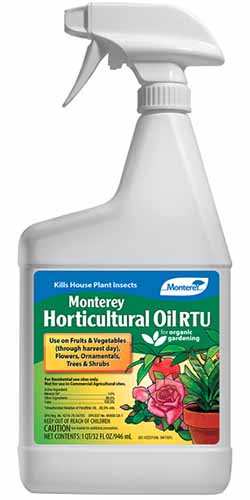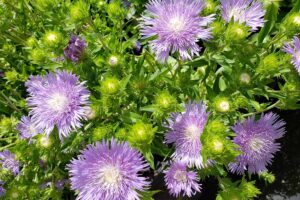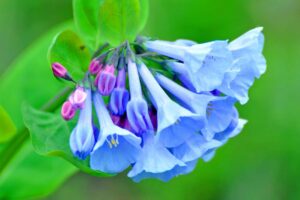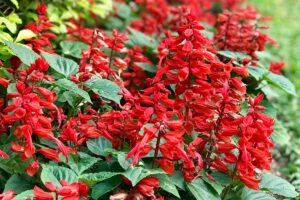Anyone who’s strikingly attractive knows that such beauty draws all kinds of attention, both good and bad.

We link to vendors to help you find relevant products. If you buy from one of our links, we may earn a commission.
Helen of Troy was beloved by all, but her beauty also resulted in her abduction and the subsequent Trojan War.
Modern-day gorgeous celebrities are adored wherever they go, but they also have to deal with the paparazzi and hyper-devoted fans.
It’s no different in the botanical world, especially for species of Strelitzia.
With lush foliage and vibrant blooms, bird of paradise draws the eyes of onlookers, as well as pollinating birds.
However, this plant and its beautiful structures will also attract insects that’ll drain the Strelitzia of its health and aesthetics, if given the chance.
You don’t have to put up with this, thankfully.
With the proper know-how, keeping pests away from your bird of paradise plants is an attainable goal for any gardener.
This here guide will cover the most common and prominent Strelitzia pests, along with how to control them and deter their presence in the first place.
Here’s what we’ll cover:
How to Identify and Manage 6 Common Strelitzia Pests
Here’s a general tip that’ll work to deter any pest, right up front: healthy plants are less appealing to pests than unhealthy ones, so keeping your birds of paradise properly cultivated and disease-free is key.

Frequently checking your Strelitzia for infestations is a good idea. Given a bird of paradise’s beauty, regularly looking over these plants isn’t the worst chore in the world.
For the taller species of Strelitzia, a pair of binoculars could come in handy for viewing those high-up leaves.
1. Aphids
These pear-shaped, translucent, and soft-bodied insects are common pests that may infest many different types of flora across the plant kingdom, and the bird of paradise is not exempt from aphid harassment.
A sixteenth to an eighth of an inch long, aphids primarily feed on stems and foliage, sucking out fluids with their syringe-like mouthparts.
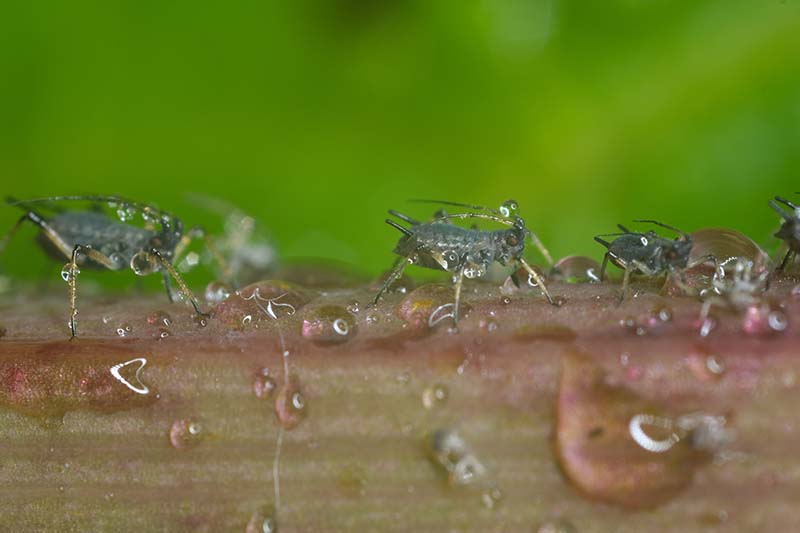
Small groups of feeding aphids won’t usually cause too much damage, but larger populations can cause leaf chlorosis and stunted shoot growth.
As they feed, aphids excrete honeydew, a sugary liquid that ends up collecting on the plant’s surfaces. In addition to causing fungal sooty mold to form, honeydew can attract ants, who will protect the aphids in exchange for this food source.
Besides the physical damage they cause, aphids can also be vectors for disease. There doesn’t need to be a large population for transmission to occur, either – all it takes is a single infected aphid, who can transmit a disease in mere minutes as it feeds.
A Strelitzia afflicted with aphids usually isn’t at risk of being killed, especially if it’s a mature specimen. However, since aphids literally sap away at a plant’s health and aesthetics, they definitely warrant controlling with extreme prejudice.
If you discover aphids, spraying the afflicted parts of the plant with a sharp stream of water from a garden hose should be enough to knock them off.
A high-pressure nozzle, a ladder, or a combination of the two might be required, particularly for spraying out-of-reach leaves.
Introducing predatory insects – ideally native ones – is an effective form of control. An aphid’s enemies include parasitic wasps, green lacewings, and ladybugs, which are available for purchase from Arbico Organics.
Sprays of neem oil or horticultural oil are solid options, too.
They either come ready to use, or they’ll need to be mixed in a solution with water. Make said solution one to two percent oil, with the remainder being water, and be sure to reference package instructions.
A 24-ounce ready-to-use spray bottle of neem oil is available from Natria via Amazon.
Additionally, Monterey sells horticultural oil, available from Arbico Organics. You can choose from quart-sized ready-to-use spray bottles, or concentrate in a variety of sizes.
“But what about systemic insecticides?” I hear you.
They’re not ideal, since they can harm the beneficial insects in your garden. There’s also a chance that the aphids will develop resistance with repeat applications. Not worthwhile tradeoffs, in my opinion.
You can learn more about aphids and how to battle them in our guide.
2. Glassy-Winged Sharpshooters
The glassy-winged sharpshooter (Homalodisca vitripennis) is half an inch long, which is pretty lengthy for a leafhopper.
It has a white and yellow underside, a darker, brown to black back and sides, and ivory-yellow spots on its head. The wings are red-veined and have a glassy transparency – hence the name – which reveals the dark color of the body beneath them.
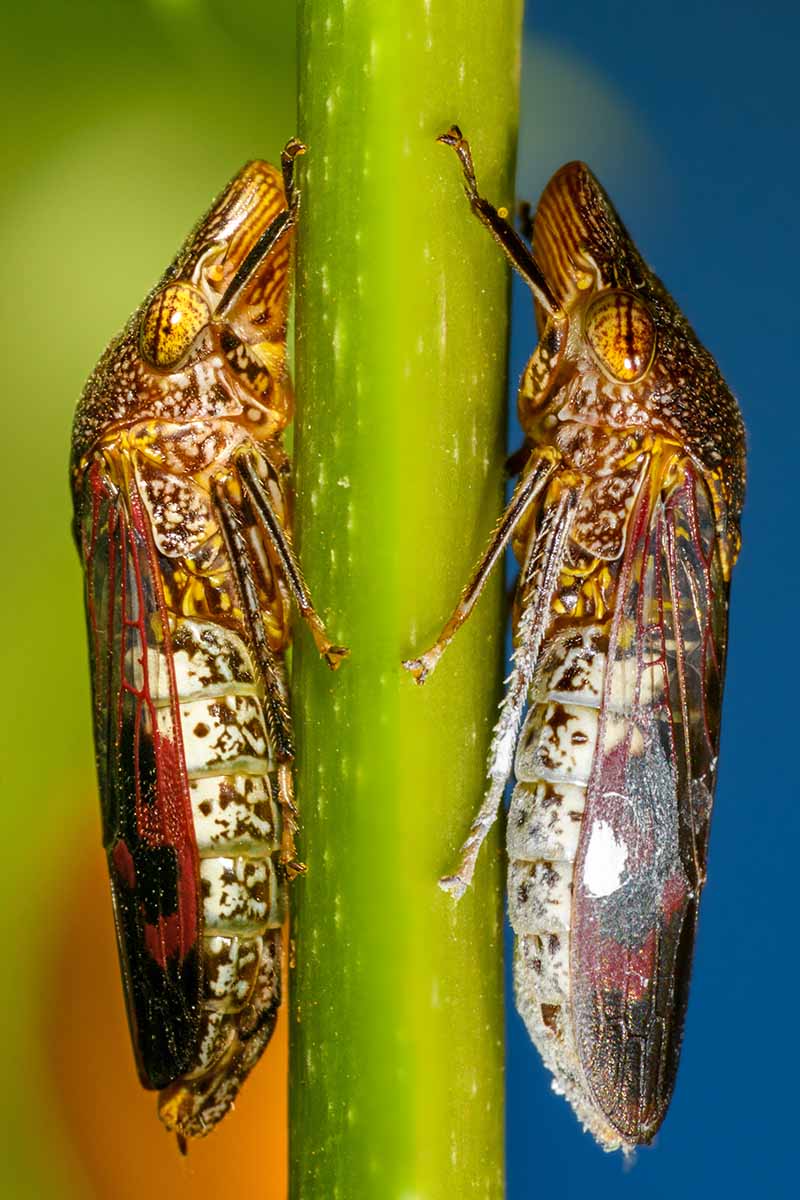
Similarly to aphids, the glassy-winged sharpshooter feeds with piercing-sucking mouthparts and excretes liquid as it feeds.
However, the glassy-winged sharpshooter consumes xylem fluids instead of phloem sap, and the liquid that it passes is less of a health risk and more of an aesthetic issue for the leaves.
As the fluid dries, it turns a crusty white, and kind of looks like dried sunscreen that’s beginning to peel.
This pest generally causes less damage than aphids, but it’s a vector for Xylella fastidiosa. This bacterium is bad news, as it can lead to a host of gnarly conditions and health problems once it’s transmitted.
Physical controls such as high-velocity bursts of water or removal by hand aren’t going to be effective.
Lightning-fast, Mr. Miyagi-esque reflexes are necessary to catch or spray them, so you’re better off using biological controls or insecticidal oils.
Creepy-crawlies such as spiders, assassin bugs, lacewings, and praying mantises eat glassy-winged sharpshooters, while parasitic wasps from the Cosmocomoidea genus parasitize their eggs.
Horticultural or neem oil applications in seven- to 10-day intervals also work.
Find more tips on controlling glassy-winged sharpshooters here.
3. Mealybugs
These segmented, wingless insects are 1/20 to a fifth of an inch in length, and are coated with a mealy-looking wax.
Large numbers of mealybugs tend to colonize in whitish clumps on shoots, and their presence often reduces plant vigor significantly. A mealybug infestation can even lead to shoot dieback and premature leaf drop.
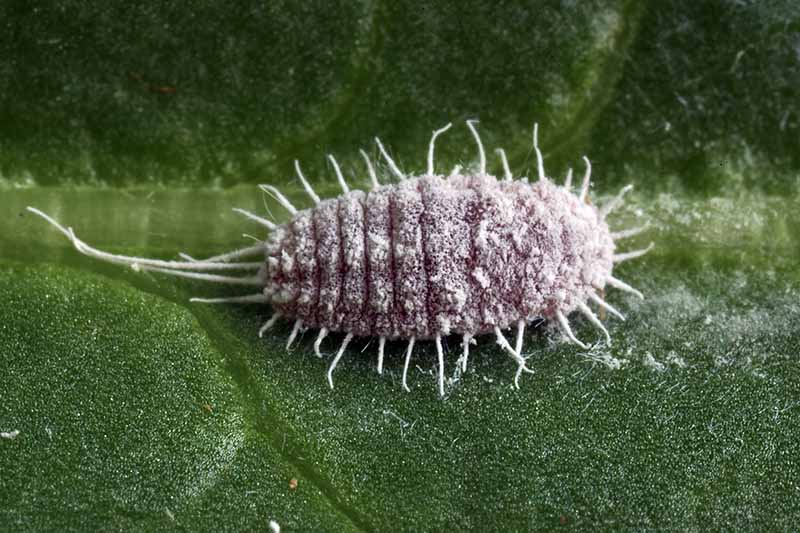
Removal by hand or strong water sprays can physically control them, and beneficial arthropods like the ones mentioned above also feed on mealybugs.
Removing nearby plant detritus can eliminate overwintering sites. Swabs of isopropyl alcohol-soaked cotton and sprays of horticultural oil to spot treatment as needed are also effective.

Bottles of 99-percent isopropyl alcohol can be purchased from Amazon and SC Johnson offers packages of 500 Q-tips, also available from Amazon.
4. Opogona Crown Borers
Since the opogona crown borer is most commonly found as a Strelitzia pest, I suppose it could be considered the bird of paradise’s archenemy, much like the Joker is Batman’s.
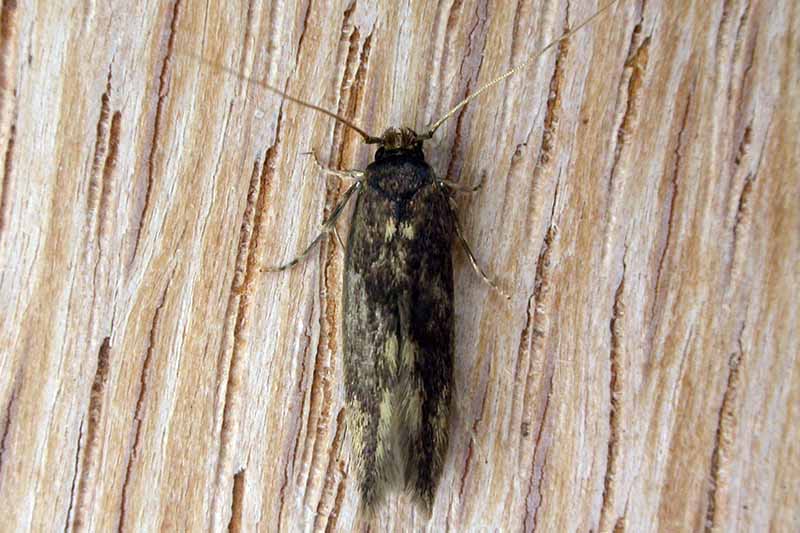
Introduced from Australia and considered invasive, adult Opogona omoscopa are fungus moths, but it’s their larvae that you have to watch out for.
Their common name originates from the way that the larvae bore holes into the crowns of Strelitzia, which is the part of the stem at the soil line.
In addition to the resulting structural damage and decay, this causes foliar chlorosis, wilting, and eventual leaf death.
To prevent infestation, take extra care to avoid wounding and overwatering your bird of paradise.
You can remove afflicted parts and nearby detritus to slow their spread, but once a Strelitzia is well and truly infested, all you can do to prevent further spread is remove it for disposal or burning.
5. Scale
In general, scale insects are rounded, itty-bitty pests that feed via straw-like mouthparts in a similar manner to aphids and glassy-winged sharpshooters.
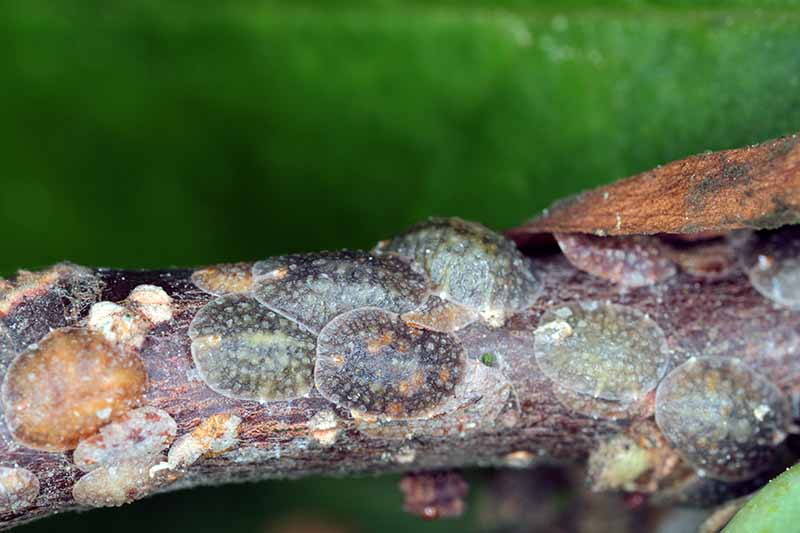
There are two types of scale that can afflict a bird of paradise: armored and soft.
Armored scale are small, less than an eighth of an inch long, flattened, and covered with a thin protective plate. Soft scale are larger, up to a quarter-inch in length, and are smooth, cottony, or waxy.
Soft scale insects excrete honeydew, which can attract ants and lead to black sooty mold. Armored scale species don’t produce any, thankfully.
But both types of scale can cause a slowed growth rate, foliar chlorosis, premature leaf drop, and dieback of infested shoots.
If heavily infested plant parts make up a small portion of the entire plant, they can be pruned away. Opening up the canopy with additional pruning can expose scale to harsh sun and parasites, reducing their populations.
Ladybugs and parasitic wasps are ideal forms of biological control for scale species. Horticultural or neem oils work well, too. For the sake of the beneficial insects in your garden, using systemic insecticides isn’t advisable.
Learn more about how to manage scale in our guide.
6. Whiteflies
These tiny pests have yellowish bodies and four white wings, all of which are coated with a white, mealy wax.
Although they multiply like flies in warm weather and have “flies” in their common name, whiteflies aren’t actually true flies.
As members of the Hemiptera family, they’re actually more closely related to scale, aphids, and mealybugs… worst family reunion ever.
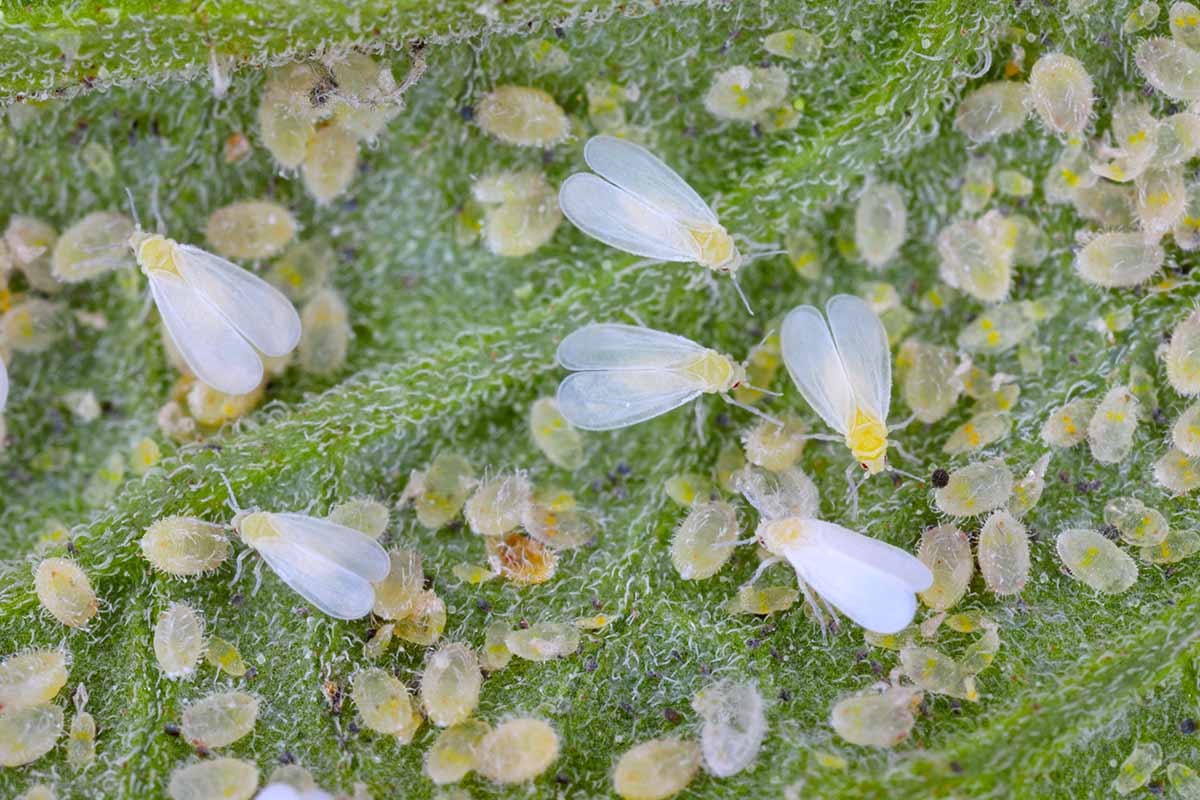
Whiteflies also have those sucking mouthparts and honeydew-excreting tendencies, which make them a real nuisance to both plant and gardener.
As whiteflies feed on sap, leaves become chlorotic, look desiccated, and drop prematurely, while the excreted honeydew develops that nasty sooty mold and attracts annoying ants. In some cases, they can even act as vectors for plant pathogens.
Strong sprays of water and pruning infested leaves can keep whitefly populations down, especially early on. Horticultural and neem oils will treat already-infested foliage, but won’t prevent future infestation.
Avoid the use of systemic insecticides so beneficial insects like ladybugs, parasitic wasps, and lacewings can go to town on those pesky whiteflies.
You can learn more about how to manage a whitefly infestation in our guide.
Battling a Pest? Don’t Be Stressed!
An infestation of nasty lil’ bugs on your Strelitzia isn’t the end of the world, especially now that you know how to deal with them. After a few successful de-infestations, these pests won’t faze you one bit.
Awareness and diligence are essential for combating these creatures. If mistakes are made and you lose a bird of paradise, don’t fret. We learn the most from our screw-ups, not our successes.
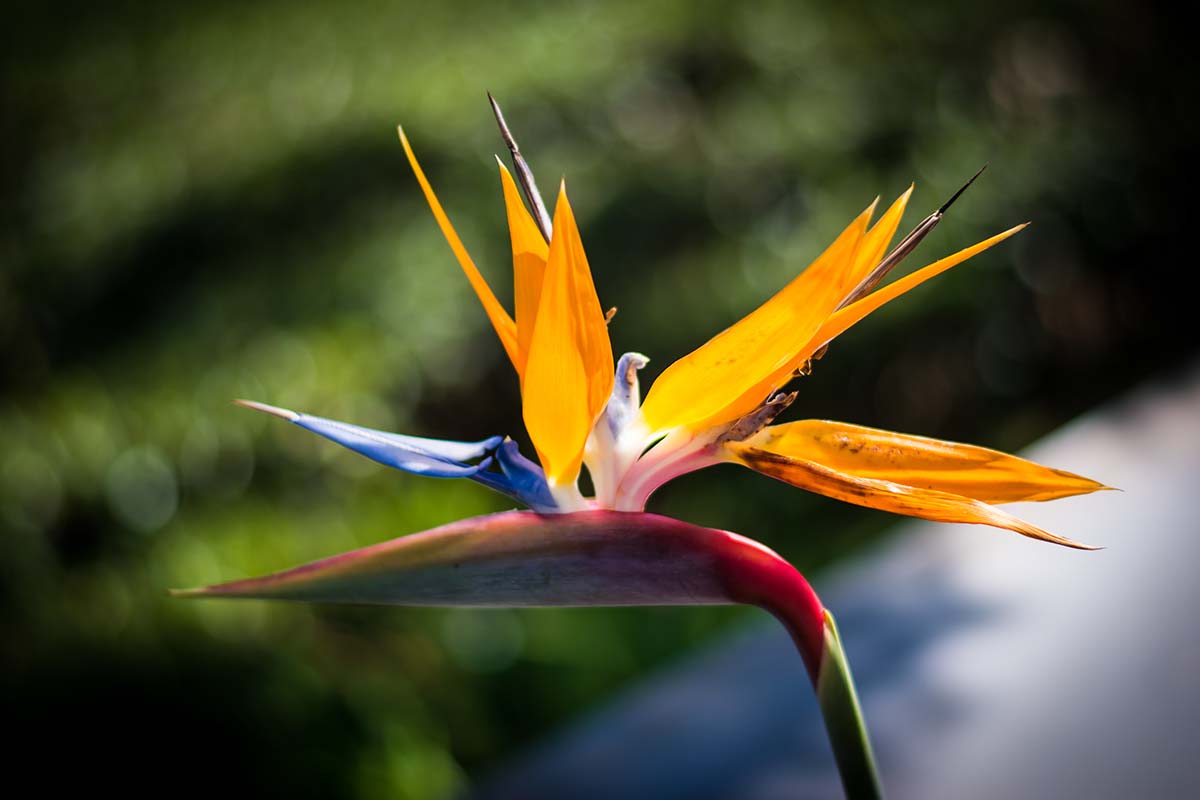
For any readers with questions, random remarks, or personal experiences to share, the comments section is your oyster. We get a kick out of reader comments here at Gardener’s Path, so have at it!
For even more bird of paradise knowledge, take a look at these articles next:
